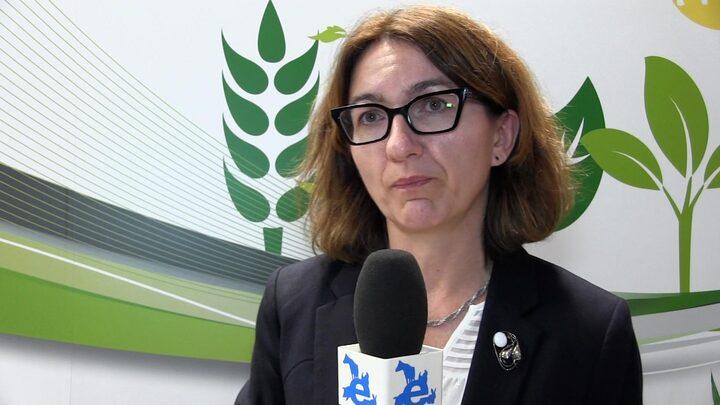Multiple Amino Acid Supplementations to Low-Protein Diets: Effect on Performance, Carcass Yield, Meat Quality and Nitrogen Excretion of Finishing Broilers under Hot Climate Conditions


Youssef Attia, consistent results regarding the low growth rate of the birds. However, I would like to make some considerations; - not being able to check if the temperatures of the two periods evaluated were fixed.;
- Regardless, as it was used a very high temperature for the ages of the birds in both periods, I think it was necessary to include a treatment in which it was the level of 15% of CP without any supplementation of amino acids was evaluated. I believe that only using this treatment could I conclude the need for supplementation of lysine and methionine.
- Finally, I would like to consider that if temperatures were kept fixed, the performance results, consistently because they are very low, may have interfered in the pattern of response of birds to the amino acid levels of feed, which may compromise the study's conclusions.



Supplemental dietary methionine sources have a neutral impact on oxidative status in broiler chickens
Juarez Donzele
Hello
If you have funds we can test your hypothesis in another set of series of experiments. I am aware that there are some literature showing that threonine, arginine, isoleucine, leucine and tryptophan may improve performance.
Youssef Attia
Sorry for spelling mistakes.
AAEs When added to low protein diet may induce an improvement, but this was shown to be affected by %CP, ingredient composition and feedstuffs profiles, age of birds and growth rate, temperature, feed intake, etc.
Youssef Attia
There are a lot of points that need to be considered but I said further experiments may be essential.

Youssef Attia, More objectively, my considerations aimed to substantiate the doubts I have regarding its results;
- FIRST; it did not make sense to me that the birds that received the diet with 15% crude protein (CP) supplemented with methionine and lysine performed similarly to those that received the diet with 18% CP. This pattern of performance of the birds that occurred between these two diets, seems to me to be more reasonable to consider that the temperature used at work, was very high for the birds, which certainly changed their amino acid requirements (Aas) to lower values.- SECOND ; neither did it seem reasonable to me that diets with a 3% reduction in CP level were deficient only in methionine and lysine. This if 18% of CP represents the real requirement of the birds, which I do not believe. - THIRD; under normal conditions, it should be considered that birds respond positively to AaS supplementation only in the correct order of sequential deficiency. For example, in the case of its results, in which supplementation of different combinations of Aas did not result in improved performance of the birds, it could be justified by the fact that the third Aas deficient in their diets with 15% CP with addition of methionine and lysine, it could be an Aas that was not being tested. In your study, for example it could be tryptophan. In this case, birds would not respond to supplementation with any other Aas. This last consideration would be evident in his work, if the diet with 15% CP plus methionine and lysine did not provide similar performance results for the birds that received the 18% CP diet.
Juarez Donzele
I suggest several solutions you may not like and this your opinion. However, in several other experiments supplementation over meth and lysine did not improve performance depends on many factors as I previously stated.


RAMI SEBAI, although not a member of the team of researchers at work, decided to state my point of view about his questioning due to my considerations about the study in question. In fact, when I associated the lack of difference in bird performance between treatments, due to the possible deficiency of a third limiter, in this case tryptophan, it was a mere example. This should take place in an environment of less stressful temperature for the birds. I agree with your proposal that under normal conditions, even under stress conditions due to less extreme temperature, the third limiting Aas could be threonine. It turns out that the fact that the diet with 15% CP, provided birds performance similar to that observed with the diet with 18% CP, invalidates the suggestion of the possibility of the possible deficiency of a third Aas. This was the reason why we proposed that the temperature used was very high, which changed the pattern of amino acid requirement of the birds. This being the factor responsible for the non-difference of birds between treatments with 18% and 5% CP.


Speculation over the Provisional Ruling on Anti-dumping Duties of Lysine by the EU Against China

Youssef Attia, I don't think I made myself understood yet. In the case of her study, it was evidenced that, since her diet with 15% CP supplemented with methionine and lysine for having resulted in the same performance of the birds receiving the diet with 18% CP, she would not be deficient in any other Aas. In this case, I would not be surprised if your diet with 15% CP with supplementation only of methionine, to reach a level compatible with that of 15% CP, would not be enough to promote similar performance of the birds achieved with the 18% diet PB. I reaffirm that in my opinion the fact that a very high temperature was used for the chickens in the evaluated phase, made it impossible to better assess their hypotheses. From your results, you still have doubts that your diet with 15% of CP with adjustment only of the level of methionine, making it compatible for this level of CP, not for the level of 18% of CP, would be sufficient to maintain the level of performance achieved with the 15% CP diet plus the two amino acids methionine and lysine. I will not insist on my point of view on this matter.
I am very happy that the paper opened this favorable discussion and stimulates further research.
Great outcome of the nutrition reduction (Low Protein Diet) and getting the same performance.
Reduction of protein is 3 point basis or app. 90 kgs of Soya.
At 1 point reduction, there is the possibility of adding any GUT health product, with no cost addition, at its full strength, which will support the digestion and strong immunity.
With 3 point reduction of protein, will reduce the nitrogen load and odor from the litter, better for the environment.
Nice research work. I only knew of energy manipulation during hot climate condition for better results in broiler production. My own perception is to feed 18cp with required amino acids and a reduce metabolizable energy of like 2.9mcal/kg as against the 3.2mcal/kg at average daily temperature of 38°c. As atmospheric temp rise to 40, I sometimes supplement feed with bakers yeast and baking powder at 0.1% to help birds to attain good osmo-regulation. When applied the birds do not pants or feel heat stress. Most often at feed to gain ratio of 2:1, with Ross 308 broiler I do attain average of 3kg at 10 weeks here in the tropics.
If the above research feeding finisher diet at 15cp with increasing methionine and lysine above nrc amino acid requirement, I think it will help in reducing cost of protein in diet and eventually reduce cost of feed most especially when there is hike in price of protein sources like soybean and fish meal.
If the above research of feeding 15cp

Summarizing my opinion, with the results obtained in this study, where a diet with 15% protein supplemented with the amino acids methionine and lysine provided a performance result of chickens similar to that obtained with the diet with 18% protein, it does not make sense to propose further study. in this line of research in order to assess the possible deficiency of any other amino acid. I think that based on your results, it would be more appropriate to implement a survey to assess the protein requirement of chickens subjected to the 35 ºC environment. After conducting this study as the first experiment, it would be worth evaluating BP reduction with supplementation of Aas.


New nutritional solution in heat stress management. <i>Ganoderma lucidum</i>: An ally to fight heat stress
Interesting topic. We at Anthem also had such experience with our Chirally and bioavailable form of vitamins.
We have tried flagship products L methyl folate, Pyridoxal 5 phosphate, Menaquinone derivatives, etc., as part of feed composition as top addition in ppm quantities. We found exiting results in terms of growth, higher immunity and less mortality.
We understand that such bioavailable forms of vitamins have so positive impact, it is food for thought for the users to try them commercially over standard regular vitamins.
Nevertheless Vitamins and proteins are the building blocks and hugely needed for overall performance.


United States













